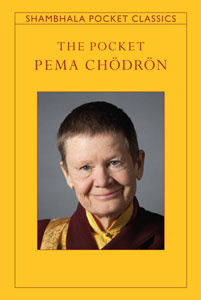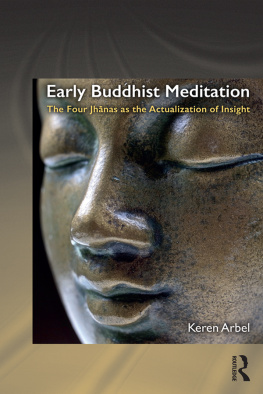The Path to Nibbna
How Mindfulness of Loving-Kindness Progresses
through the Tranquil Aware Jhnas to Awakening
David C. Johnson
Copyright 2017 David C. Johnson
All Rights Reserved.
ISBN-13: 978-1508808916
ISBN-10: 1508808910
Publication Date: 3/2017, 5/2017, 12/2017
Published by BTS Publishing
Annapolis, MO
Other Books by David Johnson
*A Guide to Tranquil Wisdom Insight Meditation,
(A companion to this book)
BTS Publishing, Annapolis 2015
*Co-written with Bhante Vimalarasi
THE HOLY LIFE, friend Viskha, is grounded upon Nibbna, culminates in Nibbna, ends in Nibbna.
Majjhima Nikya 44, Cvedalla Sutta
Contents
Introduction
Chapter One: What Is Buddhism?
A Supra-Mundane Science
Awakening Both Mind and Body
Dependent Origination Leaving Control Behind
Chapter Two: Mindfulness Re-Defined
What is Mindfulness?
The Four Foundations of Mindfulness
Feeling Is Not Feelings
Chapter Three: What Is a Jhna?
More than One Type of Jhna
Concentration Absorption Jhna
The Tranquil Aware Jhna
Comparing Aware and Concentration J h na
Chapter Four: Types of Concentration Practice
The Many Methods of Concentration Practice
Vipassan, or Dry Insight
Concentration Insight (vs. Dry Insight)
Caution with Absorption Concentration
Suttas Support TWIM
Secular Buddhism
Chapter Five: Progress in the Aware (TWIM) Jhnas
Beginning TWIM
The 6Rs and the Instructions
Chapter Six: 1st Jhn a Joy
The Suttas Explain the Jhnas
Walking Meditation and the Jhnas
Chapter Seven: 2nd Jhn a Noble Silence
Chapter Eight: 3rd Jhn a Happiness
Mett Takes You to the Fourth Jhna
Chapter Nine: 4th Jhn a The Beautiful
Advancing Breaking Down the Barriers
Radiating to the Six Directions
Chapter Ten: The Base of Infinite Space Compassion
Chapter Eleven: The Base of Infinite Consciousness Joy
Chapter Twelve: The Base of Nothingnes s Equanimity
Distractions that Arise How to Adjust
Chapter Thirteen: The Base of Neither Perception-Nor Non-Perception
No More Feeling
The Nature of Consciousness
Chapter Fourteen: The Door to Nib b na
The Neutral Zone
Disenchantment
Dispassion
The Stages of Sainthood
Chapter Fifteen: 1st Stage of Awakening Sotpanna
Attaining Nibbna Path Knowledge (Magga)
Sotpanna Fruition (Phala)
Chapter Sixteen: 2nd Stage Sakadgm
Three Ways to Nibb n a
Chapter Seventeen: 3rd Stage Angm
Chapter Eighteen: 4th Stage Arahant
Biography
Resources
Addendums
A (Beginners) Guide to Tranquil Wisdom Insight Meditation
Guide to Forgiveness Meditation
End Notes -The Path to Nib b na
Acknowledgements
I want to acknowledge Venerable Bhante Vimalarasi Mahthera, from whom I have learned this practice. He is the founder of Tranquil Wisdom Insight Meditation (TWIM). Without his skillful guidance, this project would not be possible. Descriptions for many of the jhnas have come from evening talks on the Anupada Sutta (MN 111) by Venerable Vimalarasi. It was his struggle through years of intense meditation practice, and his discussions with many of the worlds most venerable monks, that led him in an entirely different direction. He went back to the earliest Buddhist teachings, the suttas in the Pli Canon, to practice what the Buddha himself had taught his own disciples. From this, he discovered TWIM and has given us this gift of true Dhamma.
I wish to thank the Venerable for reviewing this work and correcting misunderstandings which may have occurred.
I also acknowledge Bhikkhu Bodhi for his work The Middle Length Discourses of the Buddha: A Translation of the Majjhima Nikya (Wisdom Publications: Somerville, MA, 1995) by Bhikkhu Bodhi and Bhikkh uN amoli this book, with some exceptions, is the basis for TWIM meditation practice.
Thanks also to Brenda Ie-Mcrae, who wrote down a one-page summary, based on student interviews, of what meditators experienced as they progressed through the meditation process. Seeing the need to document the levels of practice, I expanded her summary to the book you now reading.
Also, thanks to the Teri Pohl, Paul Johnson, Mark and Antra Berger, Doug Kraft and J. Delmar who helped with editing and for their many useful suggestions. Thanks to S. Jordan who rendered the beautiful cover art from his own unique design.
Introduction
The purpose of this book is to help the earnest seeker and advanced meditator understand the experiences and signposts on the Buddhas path, which has as its goal the destruction of craving and the elimination of ignorance. I want to document these experiences for the meditation community so they may be studied and preserved as a guide to future meditators.
This book was also written so that meditators without access to local teachers could have all the instructions to continue down this path on their own. Every instruction on how to meditate at every level is here. There are no secret techniques held back, just the words from the suttas and commentary by Venerable Bhante Vimalarasi.
In this edition, the beginner's instruction guide is added to the back of this book, A (Beginners) Guide to Tranquil Wisdom Insight Meditation by Bhante Vimalaramsi. Read this first if you wish to start from the beginning and make the quickest progress.
If, when you are starting, you bog down and you just cant feel this loving-kindness for yourself, take a look at the pamphlet, also at the end of this book, by Bhante Vimalaramsi entitled, A Guide to Forgiveness Meditation. Try this meditation and see if it doesnt loosen possible blocks in your mind from past traumas, bosses or other scary memories! Forgiveness can be a perfect prerequisite to experiencing warm, flowing loving-kindness.
At some places in the book, I will pu t Meditation Instruction : to highlight for students, using the book as an instruction guide, any updates to the meditation practice instructions based on personal progress, or an important experience that may arise.
This book expands on the previously printed A Guide to Tranquil Wisdom Insight Meditation . That guide clearly lays out the beginning instructions for the practice of TWIM in fine detail. This entire pamphlet has been included at the back of this book for your use, at home, if you wish to start now.
TWIM is a fancy name for, basically, the Brahmavihra practice, starting with mett or loving-kindness as the object (breath may be used but tends to have slower progress). These instructions are taken directly from the meditation methods described in the suttas, the earliest Buddhist teachings. TWIM is the practice that will lead us to Nibbna as it is outlined in the texts. We will see that when the instructions are followed, there are immediate results exactly as the Buddha laid out.
The Path to Nibbna elaborates on both the goal and the practice of meditation as explained by the Buddha. Its purpose is to follow the progress of the practice as it is explained in the suttas themselves. For that, the clearest map is the Majjhima Nikya (MN) No. 111, the Anupada Sutta, "One by One as they Occurred." This sutta shows how progress occurs step-by-step all the way to Nibbna. This is the map we will use as we go through the levels of insight in this book.
The suttas of the Pli Canon are traceable back 2,550 years to the Buddha himself. They are considered by scholars to be the words of the Buddha as he originally spoke them.
To put a finer point on this, it is thought that the Buddha spoke Magadhi. That was his native language. Pli is a form of that language, and later, all of the suttas were documented in Pli, first by reciting and then writing them down by members of the Buddhist Order in Sri Lanka.











